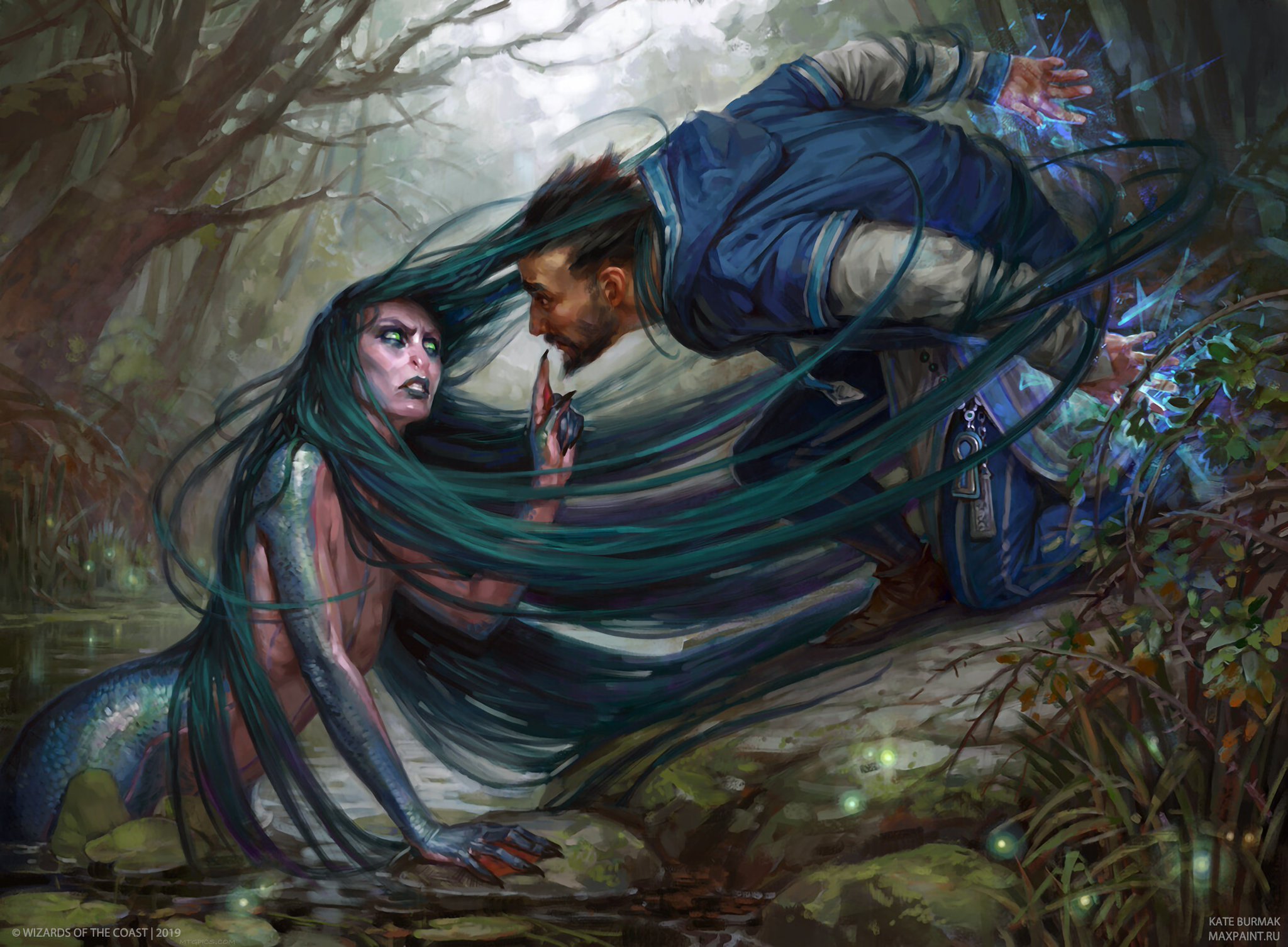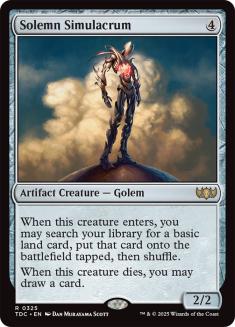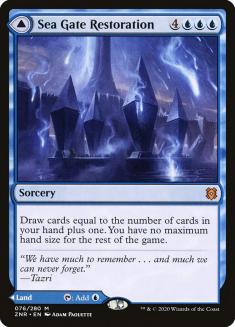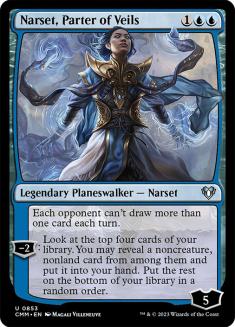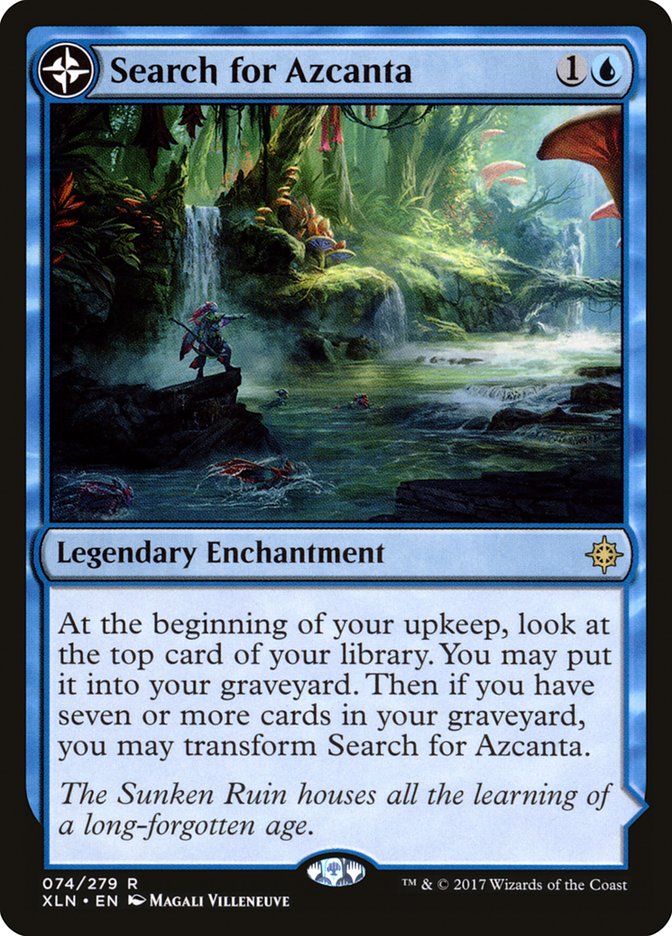The best possible outcome occurred at the Zendikar Rising Championship last weekend.
I have written many articles over the last few months about the strength of control in Historic and Standard. This is not a rare stance of mine that read my work, as I tend to favor the slower decks across the formats. Even though I prefer control over all other options, I am critical of it when the format is too volatile for it to be viable. When there’s an available lane for control to be successful, I’m on the front lines trying to prove its case.
After more than fifteen years of playing control decks at the highest level of competitive play, the pandemic slammed the door shut on my Pro Tour appearances. I had a heck of a run with live Magic, traveling to events even after the birth of my son, taking a tough administrative career path in the public school system, and general life responsibilities. As the organized play system continued to deteriorate, the SCG Tour provided a great alternative tournament series for the newly founded old veteran crew of Team BCW to navigate. These live tournaments were where I put my money where my mouth was, taking lists I crafted and competing at the highest level with them.
Getting back into the grind through digital Magic is not for me. Call me old school (or just old), but I use Magic Online and Magic Arena for testing. These are my laboratories, the vessels I use to create the magic that my wonderful audience reads weekly. The organized play catastrophe that exists now, winning something to qualify for something else, which may get you to a tournament that means something, is a nightmare I will not take part in. I’m absolutely astonished by the resolve of the competitors that maneuver through this jungle, especially for someone like Brad Barclay, who was an underdog to say the least, in the Zendikar Rising Championship field.
Another article on organized play from this grizzled control veteran will come soon, appealing to the senses of those that remember what a prestigious and successful tournament series looked like. I will continue to pressure those in charge to consider what made Magic special and how to avoid squashing the professional dream. For now, I will continue to create control decks, advocate for allies of the archetype, and deliver strategy for those interested in blue-spell shenanigans. This article will focus on the second point, celebrating the dual-control victory by Brad Barclay and what changes I would make for the wider metagame of Arena.
Examining Dimir Control (Yorion) In Zendikar Rising Standard
Creatures (7)
Planeswalkers (6)
Lands (31)
Spells (36)

I have played a lot of Standard and Historic lately, leading me to the same conclusions that Barclay arrived at. Dimir Control (Yorion) in Standard is outlandishly good, which goes against the consensus of competitive players out there. The default mentality for control decks is negative, ever since the reduction of spell power began many years ago. A few new cards and fresh reprints can shatter that mentality, which is what this version of Dimir Control (Yorion) does.
Ugin, the Spirit Dragon is everything for Dimir Control (Yorion) and Barclay was not messing around. With a few extra spots in his 80-card deck, he found the room to add four copies of this eight-mana deity. Ugin is the best possible late-game that control has access to, just as it was the last time it was legal in Standard. The sweepers for Dimir Control (Yorion) are pretty good, but nothing is as guaranteed as this option. Usually, we see a spell this expensive only in the ramp decks as a four-of, but control takes a different avenue to get to the late-game. Instead of rushing the spells out, Dimir Control (Yorion) zaps enemy threats, uses a bunch of blue spells to disrupt and draw cards, then finally ends the game with Ugin at the end of the curve. It’s not as flashy as the ramp decks; however, it’s much more impactful.
Even with all the black and blue disruption, the battlefield gets out of hand against the control user. The permanents are too powerful and the control interaction is too weak; however, Ugin returns from a format where spells ruled. Esper Dragons is a deck that may have you thinking the creatures were outrageous, but you would be mistaken. There was an actual two-mana counterspell and Dig Through Time that paired with the legendary Dragons (which just talking about forces a smile upon this battle-torn control soldier of the past). Ugin is another powerful relic of the past that will now devastate aggro and midrange enemies in Standard.
Every control deck I have written about over the last few months has included Ugin. Regardless of the color combination or how good the sweepers were, this planeswalker is a must and in Dimir Control (Yorion) it finds the perfect home. Barclay enhances it with Solemn Simulacrum, a creature that ramps up to it, helps draw toward it, and lives through the exile from it. I wanted Solemn Simulacrum to be good and decreed it would be when it was previewed, but lost a little faith since then. It’s the now obvious perfect companion of Yorion, which finds a few less targets without the white enchantments it has been used to seeing.
Speaking of Yorion, the deck has a few great blink targets. Barclay utilized Atris, Oracle of Half-Truths, Omen of the Sea, Elspeth’s Nightmare, Mazemind Tome, Ugin, and Ashiok, Nightmare Muse to maximize the Bird Serpent upon resolution. All these choices are fantastic and I agree with most of the numbers. The amount of card advantage in this version of Dimir Control is something to aspire to and I usually find myself cutting some to survive the early onslaught of aggressive creatures. Luckily for Barclay, Gruul Adventures is not the same as a Mono-Red Aggro deck.
Gruul Adventures hits hard and Dimir Rogues can disrupt while being aggressive, but neither require a critical mass of removal spells to survive. Both decks fall hard to a moderate level of removal, followed by a timely sweeper in the form of Extinction Event, Shadows’ Verdict, and Ugin using its minus ability. It would be tough to justify playing four copies of Mazemind Tome, four copies of Omen of the Sea, two copies of Cling to Dust, and the creatures he showcased if enemies are casting one-drops like crazy. This Standard format is not slow by any means; however, it predictably produces threats on Turn 2 and can be easily managed.
I would not change a single spell in Barclay’s maindeck for the wider Arena metagame moving forward. The only card change I would make is in the mana base, adding two copies of Sea Gate Restoration, replacing two Islands. In a predicted metagame with so few grindy midrange and control decks, I understand why Barclay would avoid playing it. But with his deck winning the tournament, and with a sizable portion of the population that enjoys blue decks like yours truly, it is criminal to leave Sea Gate Restoration out of the control lineup. With the ample card draw in this list, it can get by without it (as Barclay clearly did), but the downside is too low to continue into the wild west of Arena without it.
After getting some testing in, a big area where I find modifications are necessary are in the sideboard. Erebos’s Intervention, the third Essence Scatter, and one copy of Shadows’ Verdict should be cut for the third Bloodchief’s Thirst, another Eliminate, and the fourth Mystical Dispute. These changes seem minor, but they help repair some weak spots I found in the sideboarded games across the board.
In an 80-card deck, Mystical Dispute should be a four-of. This counterspell is played in every competitive format for a reason, as stopping opponent’s blue spells for a single mana is too strong of a power to not harness. Even when the opponent casts a spell of another color, the three-mana disruption is not a bad option in most cases. The other changes were removal swaps, giving us additional chances to kill the Turn 2 play of our aggro opponent before they get out of hand. Six sweepers work just fine in preparation for Ugin, and with these many ways to slam the door shut on an aggressive opponent, the remaining spells should assist in getting to that point. If I write one more article on how good Heartless Act is, I may receive a strongly worded email from my editor (CEDitor’s Note: It’s true…). Let us just say that the best black removal spell in Standard since Doom Blade needs a bit of assistance, which is what Eliminate and Bloodchief’s Thirst is here to do.
Examining Azorius Control In Historic
Planeswalkers (6)
Lands (26)
Spells (28)

While we all celebrate the victory of Dimir Control (Yorion) in Zendikar Rising Standard, we should not forget about what took place in Historic. Control made a clean sweep at the Zendikar Rising Championship, with Barclay getting the majority of his work done with Plains and Islands. Azorius Control in Historic has been my weapon of choice since the format’s inception, summoning the might of Teferi, Hero of Dominaria as the primary win condition. I’m not sure if Barclay was as tempted by Torrential Gearhulk as I was, but he decided to put his full faith in one of the greatest planeswalkers ever to roam the multiverse to lead him to victory. His decision paid off, as he torched the competition with one of the most reactive control decks that we have seen win a championship in a very long time.
This deck barely taps out. There are two copies of Narset, Parter of Veils to make six total planeswalkers. In addition to those, Wrath of God is the only other spell that requires a large mana investment on your turn. Baffling End, Search for Azcanta, and Grafdigger’s Cage are all very cheap sorcery-speed actions, with the rest of the deck being completely reactive. I have gone back and forth on whether this deck, the Pact of Negation/Gideon of the Trials combo, or my Torrential Gearhulk creation was the best choice in Historic. But Barclay has made my decision easy, which after putting aside the others, I can easily see why.
There’s validity to the other Azorius Control options but none are as consistent as Barclay’s version. I wrote about a deck very similar to this one, touting about the strength of maindeck Grafdigger’s Cage and a reactive attack to combat the speed of Mono-Red Goblins and Rakdos Sacrifice. Once Four-Color Midrange became the deck to beat, I got cold feet and fled to a slower deck with more tap-out strength to combat the likes of Uro, Titan of Nature’s Wrath and Hydroid Krasis. It turns out that this version, with a few tweaks, does well enough against it while mopping up the creature decks with ease.
A few changes must be made to this version of Azorius Control to better combat the Arena Historic metagame. I take nothing away from Barclay’s victory, but there are some weak spots that he was not punished for having. But that’s how competitive Magic works — Barclay played and prepared well, got a little lucky, and took home the championship. After the dust has settled, it’s up to us to continue to improve upon the Azorius Control machine that can lead Historic.
The first move that had to be made was cutting a Cast Out for a second Aether Gust and the Search for Azcanta for a third Narset. These two maindeck changes have been huge, providing a much stronger game against Four-Color Midrange as well as any aggressive deck centered around red or green. Green is simply too good in Modern, Pioneer, and Historic, making Aether Gust a no-brainer maindeck choice. One copy just does not cut it and it’s likely that I increase the number to three at some point soon. The other change was to prevent these overpowered Simic spells from drawing extra cards, but it gets better than that.
Even against aggro decks that have no way of producing an extra card, Narset digs to a must-have Wrath of God or removal spell while absorbing damage the turn after. This was always the series of events while it was legal in Standard. It’s not the most exciting way to use this busted planeswalker but it was never a dead card for this reason.
The extra Narset that was in the sideboard becomes a Search for Azcanta since it should be somewhere in the 75. Search for Azcanta is very powerful against slower decks, drawn late or drawn early, but is not needed Game 1 in Azorius Control. Having the seven planeswalkers, four copies of Shark Typhoon, a pile of blue disruption, and Cast Out to answer big threats fits the bill of what is needed against slower decks.
The last change needed is adding the fourth Mystical Dispute, replacing a copy of Dovin’s Veto. Mystical Dispute is one of the best counterspells ever printed, and while Four-Color Midrange is as powerful as it is with control also on the rise, I want to ensure that one is close to my opening hand in Historic.
I want to congratulate Brad Barclay on a stellar performance and proving to all of us that control, in the current competitive formats, can still be king.

